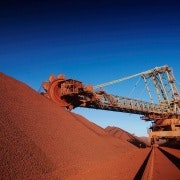Carbon mapping: and why only climate policy can stop the boats
Climate change is one of the most difficult diplomatic conundrums facing the international community, as we have recently seen in Warsaw, but rather than read about our problems it is always helpful to be able to visualise what's at stake for governments, including our own, if we don't get a move on in this next decade.
The 'Carbon Map' is an interactive tool that has been developed to explore both the responsibility for climate change and its consequences. It was featured prominently by The Guardian and was a finalist in the World Bank’s 'Apps for Climate' competition.
There are many fascinating insights to be gained just by navigating the map based on population growth, CO2 per person and emissions change.
This is what the world would look like if all men (and women) were created equal and the geography of a country represented their carbon emissions per person.
But it's only once you start to explore the interactive options like 'reserves' at the top of the map (Figure 2) that a visual picture of the clash behind the politics of climate risk and the self-interest of untapped fossil fuel nations begin to emerge.
Figure 1: Geographic area

Figure 2: Known fossil fuel reserves

The carbon map demonstrates the inequitable distribution of proven fossil fuel reserves and, also, the likely diplomatic problems associated with deciding which two-thirds of the remaining reserves will need to be left in the ground to achieve a stable climate. Mapping like this allows us to see visually the pressures that specific countries will face domestically from their constituents to exploit fossil fuel resources.
One of the larger obstacles going forward on a global deal has been countries taking responsibility for their historical emissions (Figure 3). More recently this notion has been accepted by America, one of the largest historical emitters. You will notice that Australia has exactly the same shade of brown as the US and a historical footprint almost as large as the whole of Africa, which is perhaps what was frustrating negotiators in Warsaw.
Figure 3: Historical emissions (shaded CO2 per person)

The above map shows that when you view climate through historical emissions and CO2 per person, both Australia and North America can’t simply say this is the responsibility of China and India to sort out. It also shows Britain, with its industrial revolution, off the west coast of Europe completely disproportionate to both Africa and South America in terms of its 'historical emissions'.
While it's interesting to look at these issues visually from a global perspective the debate in this country must surely shift, at some point, to looking at direct action, the government’s position as a positive contributor to an international deal, and how it aligns with their policies more generally.
All the debate in Australia to date has focused on an emissions trading vesus direct action, but what is not being discussed is direct action and an obstructive international position on climate versus 'stop the boats'. It is only when you start turning your attention to this policy position in the longer term that the predicament of their problem becomes apparent.
If we postpone action on decarbonising our economy globally too late the cost of making the transition to renewable energy will represent only a small part of the political ramifications for what is, at present, an unsuspecting electorate. Now I confess, I am an optimistic man by nature but if the carbon maps of sea level rise and people at risk are right, does anyone really think we could 'stop the boats'.
Figure 4: Sea level

Figure 5: People at risk

Even if you completely overlook the Garnaut Report and the $266 billion worth of infrastructure that would be exposed by a 1.1 metre rise in sea level, with our current processing arrangement costing $12 million per boat the economic impact of dealing with this scenario would send any treasurer to an early grave.
Neither side of politics would be spared, even conservatives pinning their hopes on a return of “the successful days of the Howard Nauru policy” would need to have a rethink, as the island nation would now be underwater.
In the medium to longer term, the focus of the debate for developed nations will shift more and more towards national security and immigration, which perhaps partly explains why the US military is such a big supporter of renewable energy.
What this represents, however, is a huge political challenge to the conservative side of politics in Australia, and also globally. Traditionally, they have sat back being both anti-action on climate change and anti-immigration, but what the mapping shows us is that at some point they will need to pick a side. All too frequently the debate is hijacked by people opposing climate change action on the basis that it is a left-wing communist conspiracy to take over government.
While I will never fully understand the motivations of Barnaby Joyce, Cory Bernardi, et al, the truth is that if you were trying to get your country overrun by communists and refugees then, as the carbon map indicates, failure to deliver on a global emissions deal would definitely be the fastest way to do it.
Matt Grantham is a radio presenter, political comedian and contributor at Beyond Zero Emissions.













